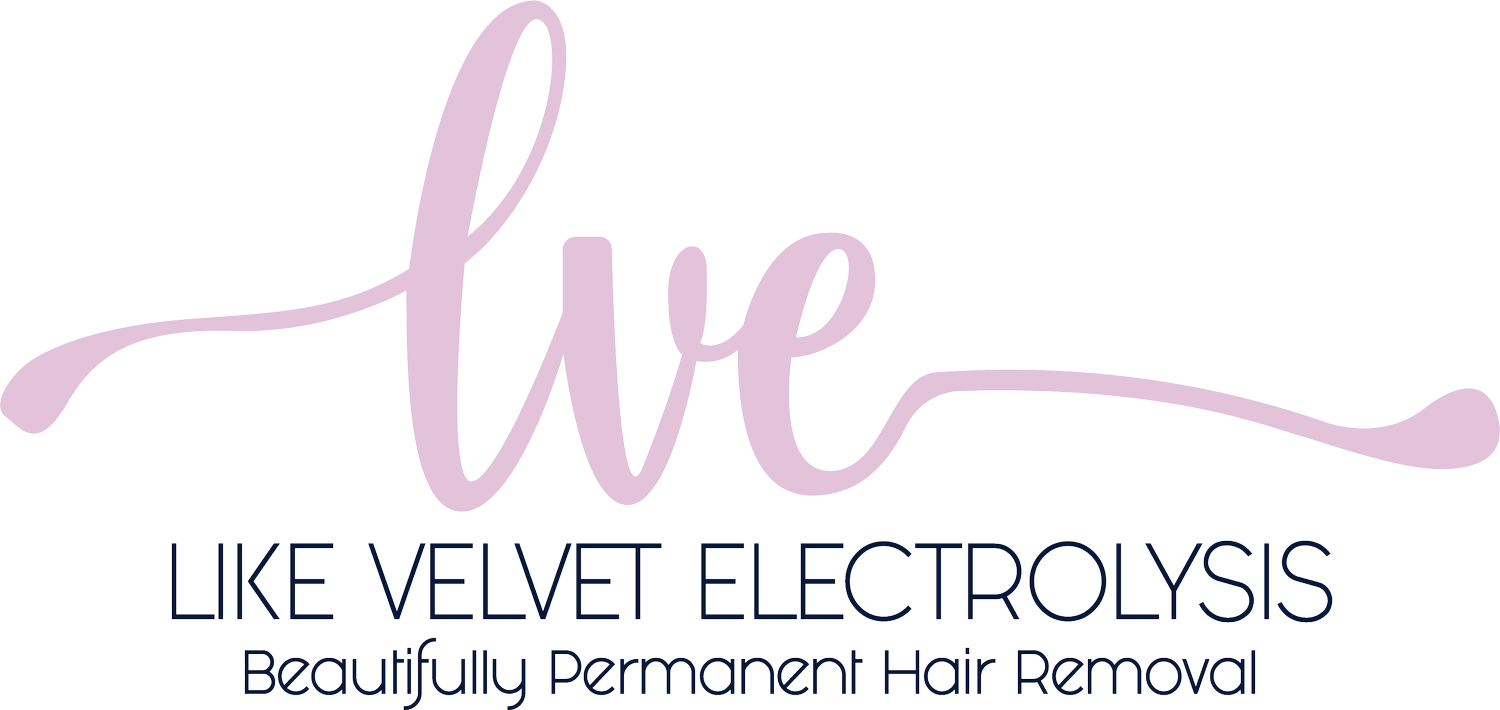
Before & After Your Appointment
Before Your
Appointment
-
Stop all other methods of hair removal in the areas you would like treated and grow your hair long enough to be removed with tweezers.
-
Exfoliate the area to be treated with a soft loofah or sugar (not salt) scrub to remove dead cells that can clog follicles.
-
Drink lots of water during the 24 hours before and day of your treatment. Electrolysis needs water in the follicle to work and the more hydrated you are, the more comfortable the treatment will be.
-
Avoid alcohol the day prior to your treatment since it dries out your skin.
-
Limit sun exposure - sunburned skin cannot be treated.
-
Arrive to your appointment with clean skin, no make-up, heavy lotion, or deodorant.
-
Wear comfortable clothing that won’t rub on treated areas.
-
Consider over-the-counter pain medication 30 minutes prior to your treatment if you feel like you may need it.
-
Discontinue use of irritating skin products such as glycolic acids, retinols, and chemical peels or masks, for at least a week prior to treatment.
There are some circumstances and conditions in which electrolysis is restricted, precautionary measures taken, or avoided altogether. Safety always comes first. When in doubt, don’t!
Electrolysis is
Not Permitted
Pacemaker
Epilepsy or a history of seizures
Currently undergoing cancer treatment
Restrictions/Cautions
Surgery - 6-12 month wait, depending on healing process
Use of Botox or other injectable fillers – wait 2 weeks
Use of retinol and acid products – discontinue use and wait 1 week
Accutane – wait 6 months
Active skin inflammation, infection, or disease such as fungal, viral, bacterial, or parasitic infections, sunburn, wounds, etc. – wait until completely healed or resolved
History of hyper/hypopigmentation problems – take precautions
History of keloid scarring – take precautions
Cardiovascular disorders and use of anticoagulant drugs prescribed for this condition - take precautions
Auditory devices must be turned off or if not possible, physician’s approval will be required
Blood disorders and diseases such as hemophilia, HIV, AIDS, and hepatitis – must be under control or fully recovered
After Your
Appointment
Do your best to keep the area clean and free from bacteria and irritants.
You may experience redness, slight swelling, tenderness, scabbing, bruising, or breakouts (small whiteheads). This is normal and should subside within a day or two.
Wash skin with a mild soap, no perfumes or alcohol, to avoid irritation and dryness. You can cleanse the area with alcohol-free witch hazel between washings.
If your skin is still irritated the morning after your treatment, you can apply Bacitracin, an over-the-counter antibacterial ointment, 2-3x/day for the next couple of days. Apply with a Q-tip or very clean hands. Hydrocortisone cream, any with at least 1% hydrocortisone, is anti-inflammatory and can also be applied if skin is still irritated on day 2 post treatment.
To reduce swelling and redness, an ice pack wrapped in a clean towel can be applied, 20 minutes on, 20 minutes off, several times a day.
-
Do not rub, scratch, or pick at the treated area to avoid transferring dirt and bacteria to the skin.
-
Moisturize with a quality lotion that doesn’t contain irritants such as glycolic or hydroxy acids, fragrance, or alcohol.
-
Do not wear makeup or deodorant for 24 hours.
-
Avoid excessive sweating for 24 hours
-
Stay out of the sun for the next 48 hours to lower the risk of sunburn and hyperpigmentation. Your skin defends against UV rays by producing melanin, or pigment. Sometimes skin that is injured or traumatized can over-produce pigment in those areas. Always wear sunscreen
-
Do not swim in chlorinated water for 48 hours following treatment.
Between treatments, you can clip any new hair or regrowth with small scissors or shave. NO MORE waxing, tweezing, threading, sugaring, depilatory products, or laser treatments in the areas you are receiving electrolysis.

